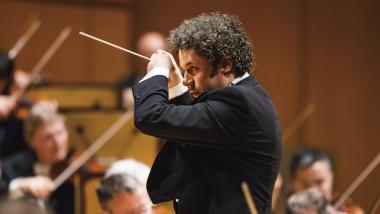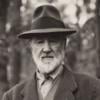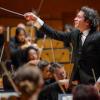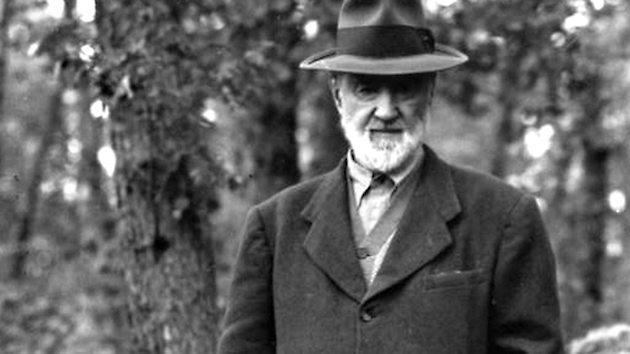
The most significant takeaway from Gustavo Dudamel’s cycle of Charles Ives’s four symphonies with the Los Angeles Philharmonic is this: He is one helluva fine Ives conductor.
In every situation, Dudamel has managed to capture the essence of every aspect, quirk, and vision of this American iconoclast while sweating the details of what couldn’t have been an easy time for his orchestra. With his abrupt shifts of gears, collisions of opposing forces playing entirely different things, and other sand traps, Ives can demand a lot from musicians, and some listeners, too. Fortunately, the LA Phil has become famous as a quick-study band, and they would need that ability with four highly diverse symphonies to be learned, performed, and recorded in just two weeks. Overall, I’d call it Dudamel’s best cycle of the many he’s done here.
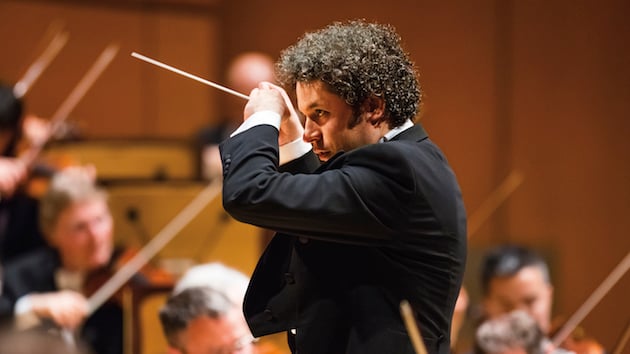
In one of the great what-ifs of music history, Ives’s Symphony No. 3 (“The Camp Meeting”) caught the attention of none other than Gustav Mahler, then the conductor of the New York Philharmonic, who ran across a copyist score at the Tams Music Library and took it with him to Vienna in 1911. Alas, it was Mahler’s last journey, for he died months later, before he could perform it. If Mahler had lived to conduct the Third, given his fame and influence, it could have been a huge turning point for the then-unknown Ives — and American concert music as a whole — in ways we can barely imagine. As it happened, the Third had to wait until 1946 for its first performance, where its basically gentle, contemplative sequence of hymn-based material fit comfortably into the era of Copland-led, neoclassical-based Americana, then at its peak.
Such was the compressed nature of the schedule that Ives’s Third was allotted only one performance Thursday night (Feb. 27); the other symphonies received two apiece. As with Ives’s Symphonies Nos. 1 and 2 (heard Feb. 20 and 23), Dudamel displayed an exceptionally graceful way of shaping phrases in the first and third movements. In the second movement, nominally a scherzo, Dudamel’s habit of emphasizing sharp thrusts served him well as Ives’s peculiar irregularities poked through the generally bucolic mood. And at the close, he held out the faint church bells (played offstage) nearly into infinity — beautifully done.
From there, the cycle took a big leap the following morning (Feb. 28) to the incredible, light-years-ahead-of-its-time Symphony No. 4, where the full portrait of Charles Ives was suddenly upon us. Here, Mahler’s example becomes even more pertinent. He once said to Sibelius that a symphony should be like the world, embracing everything — and that is precisely what the Ives Fourth set out to do. After another hymn to start with, the orchestra grows to gigantic size, the textures become exponentially more complex and dissonant as Ives throws everything he knows into the uproarious second movement, subtitled “Comedy.” Then he scales it down to a blown-up string-quartet transcription, and finally heads toward the stars. The only possible follow-up would be the Universe Symphony, which Ives couldn’t develop past the sketch stage.
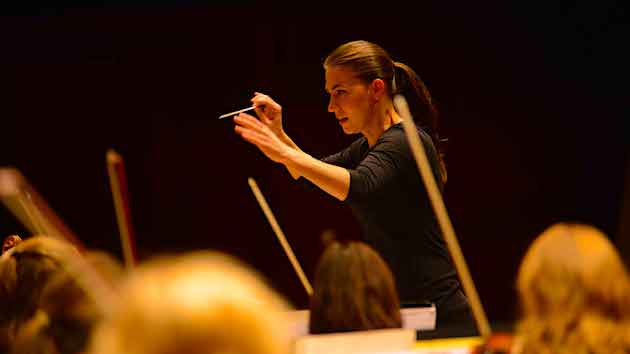
The Fourth is so complex that Dudamel gave in to the sometime practice of using a second conductor — LA Phil Conducting Fellow Marta Gardolińska — to lead the hidden strings to the rear and various onstage segments of the ensemble. Nevertheless, Dudamel knew how to create suspense prior to starting the engines of the “Comedy,” and he let the pandemonium and chaos rip con brio when the “Country Band March” came storming in, with the sharp acoustics of Walt Disney Concert Hall revealing strand after strand of delicious detail. He made the strings sing with Mahlerian warmth in the third movement, and I’ve never heard a performance live or recorded where the pipe organ made such a big impact, placing a deep, firm carpet under the sound. The Los Angeles Master Chorale made magical entrances in “Watchman, Tell Us of the Night” in the first movement and in the celestial coda, which floated off into space. I can only hope that the forthcoming recording can do justice to what I heard live.
Prior to both the Third and the Fourth, Dudamel stood alone on the darkened stage, leading invisible players in a soulful rendition of Ives’s The Unanswered Question. He was so intent upon establishing the right meditative mood that on Feb. 28, he had to abort a false start when coughers and a cellphone interfered.
Also included in both concerts, as per the series’ “Ives and Dvořák” concept, was Dvořák’s omnipresent Symphony No. 9 (“New World”), which I suspect was the main draw for a good deal of the audience. As heard on Feb. 27, Dudamel was prone to sensation-seeking exaggeration at times — whether fast, fierce, and aggressive, or slow and mannered to the point where the second subject of the first movement veered close to parody. Advantage: Ives.

